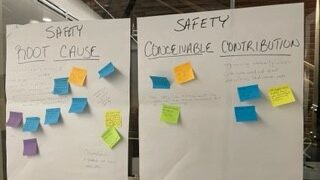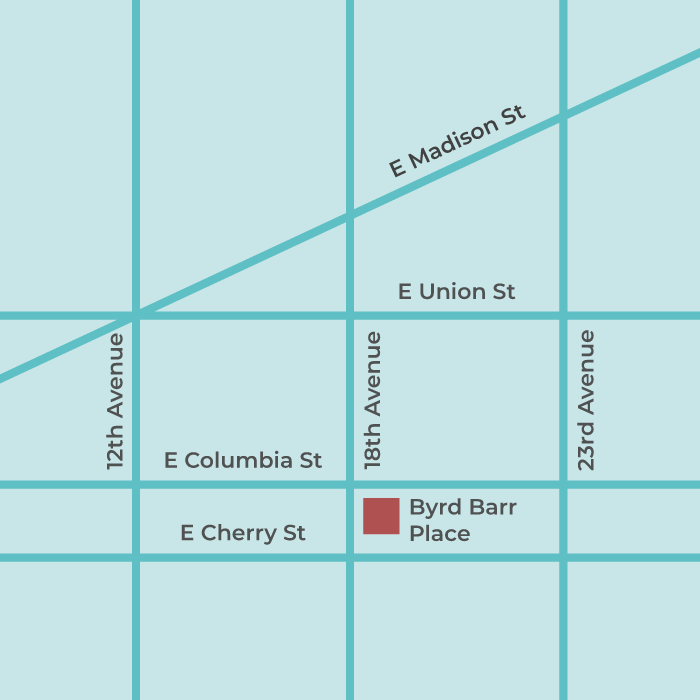During our first community convening on Thursday, Feb. 1, 2024, more than 25 people gathered at Byrd Barr Place to discuss issues important to our community. Once identified, each participant listed what they felt were the root causes and what conceivable contributions they felt they could offer.
Our priority issues included youth engagement, affordable housing, crime reduction, and community connectedness –— all of which resonated deeply with our shared commitment to our community’s well-being and future. The following shares more details of our discussions around each issue, root causes and conceivable contributions:
Youth Engagement: The vibrancy and potential of our youth are clear. While youth engagement has been down, we have come up with ways to fix that. We recognized that many challenges could be addressed by providing more programs that support and mentor our young people into leadership roles. We’ve lost some opportunities for socialization among youth so looking into sports groups, the YMCA, and setting up free events could help. We discussed polling youth about what they are currently into and meeting them at their level to ensure we are giving them not only what they want, but what they need.
- Root causes that people identified included an absence of skill and trade programs, underpaid educators, low parent engagement, lack of funding, lack of tradition, deficiency in continuous sustainable activities going from one level to the other, constant disruption of school programs and resident assignments, over-emphasis on testing, and loss of connection between education and the real world.
- Conceivable contributions were mentorship programs, literary programs, trade and skill programs, community awareness and protection of schools, community support of music, arts, sports, restructure of the education system, adaptation to students with technology in mind, and supporting the neurological development of children.
Affordable Housing and Support for the Unhoused: Community members expressed a strong desire for actionable plans to increase affordable housing and provide comprehensive support to our unhoused neighbors.
- Root Causes discussed were increases in rent prices, gentrification, unemployment, lack of mental health programs, decreases in government funding, and a lack of marketing of organizations that provide services.
Crime Reduction: We agreed on the importance of community-led initiatives to reduce crime, emphasizing prevention through education and opportunity. Looking at safety, there seems to be a deficiency of “community” within the community. There aren’t many opportunities to work with others on projects like sports, gardening, or crafts, which could bring more people together and aid in feeling more connected as a community. The lack of police presence also creates distance, and that could be remedied by organizing events and community groups as well.
- Root causes were summarized as accessibility to guns and defunding police campaigns.
- Conceivable contributions were as follows: invite Seattle Police Department law enforcement to join our convenings; support community policing and recruiting within the community; organizing community groups to be part of the solution; promote community events and activities that provide opportunities for engagement and belonging; offer “Stop the Bleed” workshops; and advocate for stronger gun safety laws.
Displacement and Community Connectedness: The troubling trend of displacement was acknowledged, alongside the need to strengthen community bonds and ensure everyone feels a sense of belonging. The lack of community being felt is a trickle-down effect, which starts with a belief that we don’t need each other, spearheaded by the idea of self-sufficiency. People feel disconnected, empathy is missing, and neighborhoods aren’t perceived as safe or walkable. We think that coordinating community events at Byrd Barr Place could bring people together and assist in bringing that community feeling back. We also see this as an effect of COVID as it has caused more isolation among youth and adults.
- Root causes could be attributed to gentrification, racism, disruption, isolation caused by COVID, lack of empathy, neighborhoods not walkable, lack of affordable childcare, and lack of support for local businesses.
- Conceivable contributions were to coordinate community events at Byrd Barr Place, cultural celebrations and events, partner with other community organizations (e.g., Umoja Fest and Historic Central Area Arts and Culture District (HCAACD)), connect community councils, increase opportunities for social engagement and neighborhood participation, support local businesses, and provide support to new entrepreneurs.
Safety and Violence: Our dialogue on safety and violence was both passionate and pragmatic, focusing on the urgent need for collaborative efforts to combat gun violence and promote peace.
- Root causes comprised of decrease in police presence and accountability, wealth inequality, sensationalized reports of violence, vast number of guns, understaffed police force, inability to respond or be a part of community, disconnection in neighborhoods, gentrification, poverty, no mental health support, lack of spirituality, empathy and forgiveness among people, and anger and hate generated by a polarized political environment.
- Conceivable contributions were summarized as redistributing funds to Black and Indigenous organizations, offering social and spiritual groups and support.
Generational Wealth: We discussed the importance of creating avenues for generational wealth within our community, ensuring long-term prosperity and stability. One way to ensure generational wealth is to support the businesses within the community. The companies that have been there, supporting the community and the smaller ones run by local families or friends. It would help to make everyone more aware of said businesses. This could be accomplished by setting up markets and events for the neighborhood. This would help people to mingle more and again aid in our pursuit of community.


